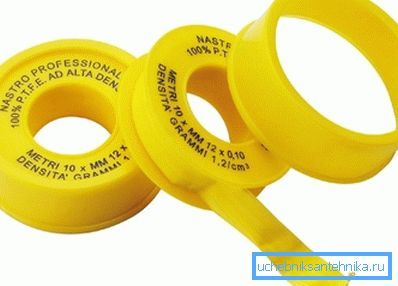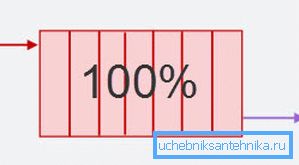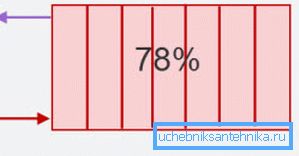Connection of heating radiators: methods, schemes,
How to connect the radiators to each other in order to provide high-quality space heating?
This question is particularly relevant if the heating system is designed and installed in a newly built house. However, even in the houses that are already in use, the connection model can be revised and updated to ensure greater energy efficiency of the heating system used.

In this article we will look at what kind of connection scheme of radiators in a private house can be considered optimal and why. In addition, we will learn what are the features of the implementation of each of the proposed schemes.
Construction features

There is a wide range of heaters on the market, which are designed to be filled with coolant circulating in sections and giving off part of the heat to metal parts. Metal parts in the design of the device, in turn, release heat into the environment.

Regardless of whether the design of the batteries used is panel or sectional, they all have one thing in common - the presence of four inlets. Two holes are located at the top of the ends, and two holes at the bottom.
These holes are necessary for connecting to the pipes of the heating system. The choice of the lower or upper holes for installation may be due to the peculiarities of the location of the device and the chosen wiring diagram.
Review of current methods
The connection of heating radiators to pipes can be performed in accordance with the following methods:
- The simplest and at the same time effective way of connecting pipes to the battery is to feed the top and return pipes from the bottom..

The advantage of this solution is that the coolant passes through the heating device almost by gravity. When using this scheme, the sections of the installed radiator will fill up faster, while the pressure on the connecting fittings will be low.
The disadvantage of this method lies in the fact that such a leading pipe is rarely used in modern apartments and houses.
- Unilateral connection of radiators to pipes almost as efficient as the previous scheme, since the coolant lends itself from above, and goes into the lower hole. The efficiency of the radiator with this installation is about 97%.

Important: If you install an aluminum battery in this way, there are limitations on the number of sections used. The number of sections in this case should not exceed 20 units.
- The lower method of connection, despite the lower efficiency (about 88%), is becoming increasingly popular. This is not surprising, since modern heating systems are carried out by means of pipe connections hidden under the floor.

Despite the fact that the result of the installation works with their hands in this case looks more accurate, it will take more time to fill the sections with coolant and, as a result, more time to ensure a comfortable temperature in the room.

Leading the feed from the bottom can only be motivated by the peculiarity of the pipe installation. The efficiency of using batteries connected in this way does not exceed 75-78%.
- Lower one way connection not common, however there are some heating batteries where the supply and return ports are located in the lower side of the radiator.

From the point of view of aesthetic appeal, such a connection method is quite justified, but from the point of view of battery efficiency, it is better to consider the first two methods.
How the location of the battery affects the efficiency of its use

As already mentioned, the methods of connecting radiators to pipes affect the efficiency of the entire system. It turns out that the location of the heater has a smaller impact.
Consider the most common situations:
- The upper part of the radiator is completely covered with a window sill. In the ideal case, the battery efficiency is 100%, but at the same time nothing should cover the upper part of the device. In our case, the edge of the window sill changes the direction of the heated air and the efficiency decreases from one hundred percent to ninety-six.
- The battery for the sake of room design is hidden in a niche. In this case, the efficiency of the device is reduced by 7%.
- The battery for aesthetic appeal is covered with a decorative screen. If the screen has sufficient perforation in the front and in the upper part, the loss of heat transfer will be 5%. If the screen is almost devoid of perforation and at the same time covers the radiator from all sides, the loss will amount to 20%.
So, we looked at how to connect pipes to batteries in order of decreasing efficiency. In addition, we learned how not to have radiators, so as not to freeze in the winter. Now we list the current topical design schemes for heating systems.
Current battery charts

To date, several schemes for the installation of heaters are used throughout a single system. All these schemes have obvious advantages in combination with the points that need to be considered when choosing the best option for arranging a heating system in your home.
So, how can you connect bimetallic radiators to each other in the same heating system and at the same time achieve an optimal result?
- Consecutive connection is a common and easy-to-implement scheme in which the supply passes through all the batteries in turns, and the return pipe goes into the system from the last radiator. An example of the implementation of this scheme is as follows. The apartment or house has several rooms and a battery is installed in each room. The first coolant gets the battery, which is located closer to the heating boiler. Next, the coolant through the pipe enters the next radiator, etc. The advantage of this solution is to save pipes, the price of which is high, and ease of installation work. The disadvantage of the method is uneven heating of the air in the rooms, as with distance from the boiler, the temperature of the coolant gets lower and lower. Therefore, deciding on the use of such a scheme, be prepared for the fact that the room, the last in this chain, will be cool.
- Parallel connection is a circuit that is free from the drawbacks of a sequential circuit. This is achieved through the use of a common pipe through which the coolant flows. In turn, from this pipe branches go directly to which the radiator joins. A significant advantage of this scheme is the ability to overlap any of the batteries in the chain without affecting the performance of other heating devices. To this end, stop valves are installed at the entrance to each heater.
Important: In order to ensure the efficiency of the heating system with parallel connection, the bends must have a smaller cross-sectional diameter compared to the diameter of the main pipe.
- The combined battery connection scheme is used if it is necessary to combine the two earlier listed schemes under the conditions of one building object. As a rule, the choice of a combined connection may be due to the architectural features of the construction site.
How to disassemble and assemble battery sections

In conclusion, we consider how to perform the separation and connection of sections of radiators between themselves.
To begin with, such actions are possible only on sectional devices and impossible on panel-type batteries. Therefore, you can connect bimetallic radiator sections and connect aluminum radiator sections, while steel batteries cannot be disassembled and built-up.
We connect and disconnect sections using a special radiator key. The key is alternately inserted into the upper and lower outlet and scrolled counterclockwise, if it is necessary to disconnect the sections. In order to unscrew the required number of sections, there are marks on the key corresponding to the width of the section.
Conclusion
Knowing how to install the radiators, it is easy to assemble a heating system in a country house. In order to install the heaters successfully, we recommend watching the video in this article.